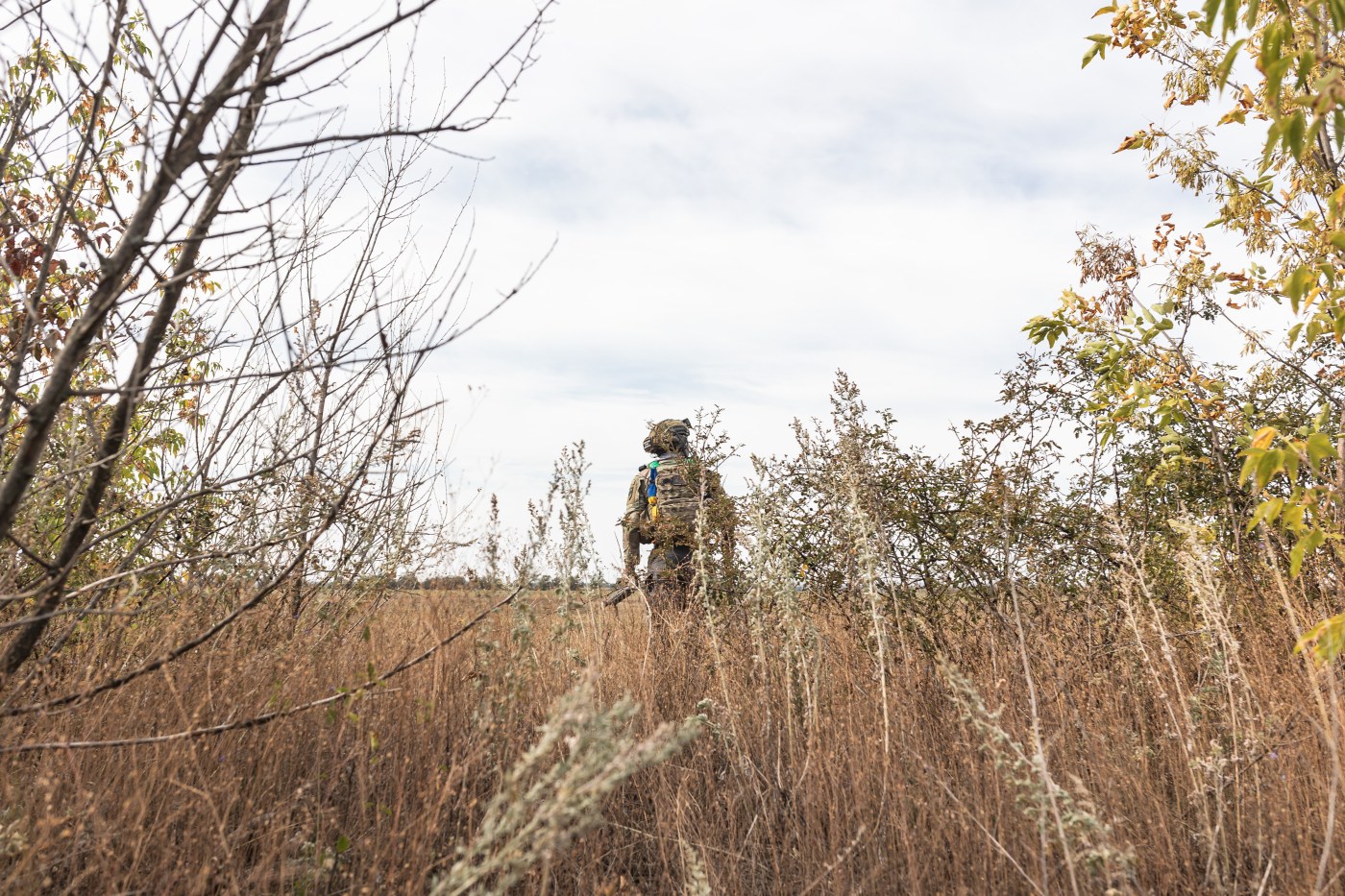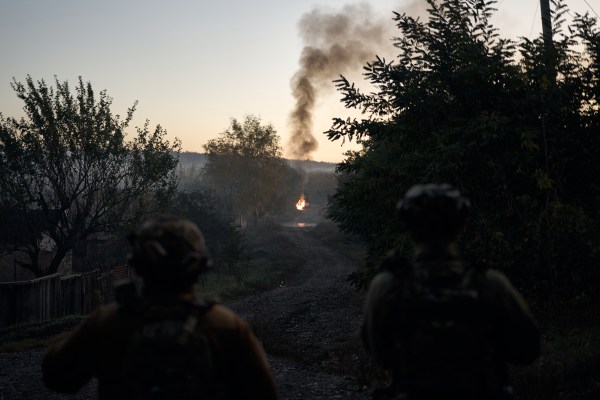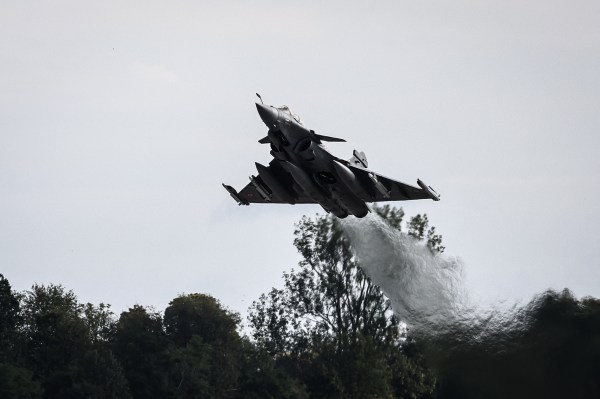Turn any article into a podcast. Upgrade now to start listening.
Premium Members can share articles with friends & family to bypass the paywall.
Russian air attacks against Ukraine have become increasingly massive over the past few months, with strikes featuring 500 drones and missiles or more now commonplace. Tactics are also evolving; instead of bombing dozens of cities, the Russians are targeting one or two to overwhelm air defense.
A strike on the night of September 7 that targeted Kyiv and other regions set a record with more than 800 drones and missiles. The attack killed several across Ukraine and hit a core government building in Kyiv for the first time. On September 10, Russia launched 458 drones and missiles, and on September 20, fired 619 drones and missiles at Kyiv, Dnipro, Kharkiv, and Zaporizhzhia.
The Russians are relying heavily on Shahed kamikaze drones—first developed by Iran— and they are not the most precise weapons. However, the Russians are counting on quantity to overwhelm Ukrainian air defense. Recently, the success rate for drones reaching their targets has risen from 3 percent to between 12 and 15 percent.
In a protracted fight between two near-peer adversaries—two sides with roughly the same levels of technological development—the economics of weaponry becomes extremely important. Ukraine’s air-defense interceptor missiles cost $2 million to $3 million—it makes no sense to use them against Shahed missiles that cost $50,000, especially when the air defense systems that launch them often become prime targets themselves.
Since the Russians expanded their invasion in 2022, Ukraine has sought to develop good enough, highly scalable, cheap technology to counter Russia’s more vast resources. But developing affordable and effective ways to neutralize the drone threat is a huge challenge.
Ukrainian military intelligence estimates that Russia currently produces 2,700 Shaheds per month. And the Russians are constantly improving their technology, equipping Shaheds with Ukrainian SIM cards so they can access the internet and transmit video during their flight in Ukrainian territory.
So how are the Ukrainians responding? They have developed specially designed interceptor drones, custom-made software, and laser systems.
Intercepting Shaheds.
Ukrainian companies have long been working on interceptor drones, but Shaheds pose a particular challenge. They typically fly at speeds of 125 to 140 mph, faster than most drones in Ukraine’s inventory, which reach about 100 mph.
Interceptors need more powerful engines and, above all, skilled operators. And so Ukraine has worked toward autonomous software solutions that will help guide interceptors to their targets automatically.
There are two primary interception methods, which are usually not combined: ramming—when the interceptor drone crashes directly into its target—or exploding nearby and damaging it with shrapnel.
The first approach is risky. With an 8-foot wingspan, the Shahed is large enough to survive if not hit precisely. But Czech startup TRL Drones has developed two fully autonomous interceptors capable of independent takeoff, target acquisition, and engagement.
The second method requires airburst munitions to create a cloud of fragments in the air. Ukraine has signed a long-term partnership with Swift Beat, a U.S. company founded by former Google CEO Eric Schmidt, to supply AI-driven interceptors using this method to the military. Three of Swift Beat’s drone models are in use—and they account for about 90 percent of Shahed interceptions.
Detection and coordination is key.
Shooting down Shaheds requires seamless coordination of detection, tracking, and engagement systems. One way to accomplish this is via radar stations, which send radio waves into the sky. The waves bounce back when they hit a drone, allowing it to be identified. But radar stations with the capability to cover 25 square kilometers can cost approximately $500,000.
The same amount of territory can be covered by acoustic detection units powered by artificial intelligence that cost less than $1,000 apiece. Startups like Zvook and Octava Defence produce acoustic sensors, hundreds of which are already deployed with the military.
The system calculates coordinates, altitude, direction, and speed of targets and transmits this information to units in real time, enabling them to launch interceptors on schedule. Detection accuracy improves with the number of sensors in a given direction, as triangulation requires at least two. Each sensor has a built-in microcomputer that processes sound locally and is trained to distinguish Shaheds from background noise, a representative for Octava Defence representatives explained, on condition of anonymity due to the company’s security policy.
Art Development’s Sky Hunter project is developing software that integrates detection and engagement systems into a single network, says founder Sergiy Nazarov. Operators see the air situation on a digital map, where AI can recommend the most suitable interceptor drone based on the target’s speed and flight profile.
The next step is integrating different drones into this system and rolling it out to combat units. Currently, an operator controls one drone at a time; however, automation will soon enable a single operator to manage from two to 10 drones simultaneously.
Autonomy and versatility.
While Russia has used its Shahed drones to target Ukraine’s cities, small drones such as Mavics or bombers pose an even greater threat to frontline troops.
In that case, a cost-effective solution is even more critical, because such drones cost no more than $1,000-1,300, including ammunition.
Mavics and bombers are vulnerable when hovering to drop munitions, and one way to target them is using drones armed with shotguns. VARTA DroneHunter is developing an AI-based module DOZOR AI with twin shotguns that can be mounted on FPV (first person view) drones.
The AI system allows target detection at 80-120 meters. By year’s end, autonomous tracking will be integrated, Max Dybenko, project lead at VARTA DroneHunter, says. DroneHunter primarily targets FPVs, bombers, and in some cases, fixed-wing kamikaze drones like Molniya, which threaten near-frontline cities such as Kharkiv in the northeast of Ukraine.
“Autonomy and versatility are the two pillars on which affordable air defense should be built,” Dybenko says.
The system uses regular shotgun shells, avoiding dependence on specialized ammunition. It can also integrate with different drone platforms, making it highly versatile. And, regular shotgun shells start at $1.
On effectiveness, Dybenko notes: “It’s normal for a crew to achieve about a 20 percent hit rate over 20 sorties and 40 shots.”
Lasers and microwaves—the next stage?
Ukraine has also pursued using lasers against Russian drones, first demonstrating the Tryzub laser system in December 2024.
Then-commander Vadym Sukharevskyi said: “Ukraine is, if I’m not mistaken, the fifth country able to claim it has a laser weapon. We can already shoot down aircraft at altitudes above 2 km.” Later, Sukharevskyi confirmed that the system had been used against “specific targets at specific altitudes.”
The key advantage of lasers is their extremely low operating cost: They rely on electricity rather than supplies of gunpowder or explosives that must be regularly refilled. The drawback is the need for a powerful energy source and cooling system. And the development of such systems isn’t cheap.
Ukrainian startup Fulltime Robotics has also developed the SlimBeam laser turret capable of downing drones at ranges up to 800 meters and blinding optics at up to 2 km. The system can be remotely controlled or operate autonomously.
There is no public information on how expensive the development was. But the British DragonFire system, which will be used by the Royal Navy starting in 2027, required £450 million for R&D, and another £1 billion is needed to launch serial production. It’s important to note that the DragonFire will be much more potent than Ukrainian analogs.
One of the main lessons of the Russian-Ukrainian war is that traditional warfighting technology, such as tanks and air defense systems, cannot operate with the same impunity as they did before. These expensive tools, produced in small numbers, are too vulnerable to strikes by cheap drones. Only mass-produced, low-cost systems can sustain a war of attrition.
By producing thousands of Shahed drones each month, Russia poses a constant threat to Ukrainian cities. Not only are they cheap to produce, but Russia is able to constantly change their routes, tactics, and flight altitudes.
Ukraine and Russia might be near-peer rivals in terms of technological development. But Ukraine has one-fifth the population of Russia, and its GDP is less than one-tenth of Russia’s. These conditions have prompted Ukraine’s top engineers to develop affordable and effective products to counter Russia's massive advantage in all aspects. The many startups working to provide Ukraine with new technology are reshaping the war—and in the process reducing the need for human involvement in the kill chain.







Please note that we at The Dispatch hold ourselves, our work, and our commenters to a higher standard than other places on the internet. We welcome comments that foster genuine debate or discussion—including comments critical of us or our work—but responses that include ad hominem attacks on fellow Dispatch members or are intended to stoke fear and anger may be moderated.
With your membership, you only have the ability to comment on The Morning Dispatch articles. Consider upgrading to join the conversation everywhere.